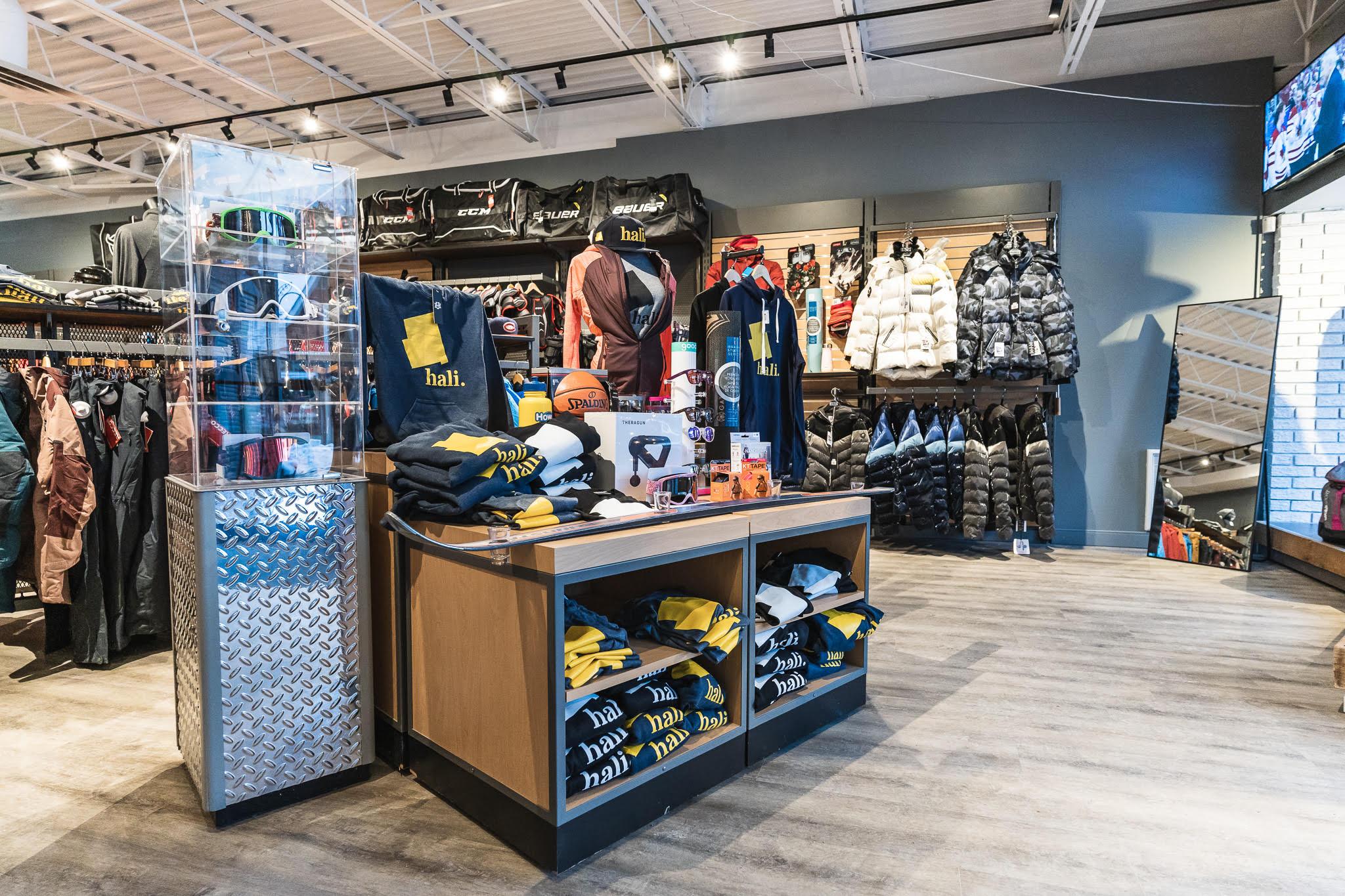Inventory shortage occurs when you have fewer items on-hand or in your retail store than what's displayed in your records.
“Products going out of stock are probably the biggest ‘silent killer’ of growth I see in ecommerce,” says William Harris, CEO and DTC Media Buyer atElumynt.
He isn’t wrong.
How many times have you been disappointed when a brand has items marked “Sold out” or “Notify me when back in stock”?
Inventory shortages can mean putting a dent in otherwise positive customer experiences.
Whileit’s hard to measure the exact value of ensuing losses,但我们知道库存短缺等同于missed sales—and missed sales are never good for business. As a result, many retailers are on the lookout for techniques, platforms, and tools to lessen the strain caused by inventory lapses.
Table of Contents:
- The causes of inventory shortages
- What types of retailers or industries are inventory shortages impacting?
- How are inventory shortages impacting retailers?
- How are retailers dealing with inventory shortages
“A major theme coming out of 2020 was the idea of ‘just in case’ inventory, which is very much the antithesis of ‘just in time,’ which all operations management textbooks teach. I’m big on the idea of moving from an era marked by an emphasis onprocurementfor cost to an era marked by an emphasis on procurement for resilience. ‘Black swan’ events are becoming normal occurrences due to macro-economic, political, and weather events. For a number of businesses, the impact of the Suez blockage was more devastating than COVID.”
—Matthew Hertz, co-Founder ofSecond Marathon
The causes of inventory shortages
In order to solve the issue of inventory shortages, you have to get to the source of the problem.
These obstacles could include:
- Lack of working capital
- Errors in inventory data
- Unreliable forecasting
- Constant changes in demand
- Port congestion
When you’ve figured out which of these best describes your situation, you can then work out a plan to solve them.
Let’s take a deeper look at each.
1. Lack of working capital
Inventory doesn’t refer only to the products a company has for sale; it also pertains to the raw materials and supplies included in the production. As a result, it often eats up a huge percentage of working capital.
Increasing your working capital can have a positive impact on your inventory, but it’s not easily done for most small boutiques and mid-sized retailers. Fortunately, there are steps you can take tooptimize your cash flow—it’s a bonus that you can also use them in times of crisis, such as a global pandemic.
Another way to increase your working capital is toseek government funding.There are available grants to provide entrepreneurs resources for improving their inventory and other business aspects.
Manage your inventory with confidence
Only Shopify POS helps you manage warehouse and retail store inventory from the same back office. Compare inventory costs to revenue, see which items are selling out or sitting on shelves, forecast demand, and more.
2. Errors in inventory data
Inventory mistakes have a major negative impact since they directly influence the number of goods sold—and by extension, profits.
Inaccuracy can stem from either human or system errors. Incorrectphysical inventory countis often the leading cause of data inaccuracies, but the good news is: it’s preventable.
Simple measures, such as performingregular store auditsand having anomnichannel sales platformand apoint-of-sale (POS) systemwith smart inventory features can significantly reduce the errors in your inventory data and ensure that your product counts are accurate no matter the sales channel.
3. Unreliable forecasting
Unreliable predictions can cause companies to make decisions that don’t support the ebbs and flows of future-facing demand.
Kristina Lopienski, Director of Content Marketing forShipBob, points out that not ordering enough inventory from manufacturers leads to out-of-stock issues, back orders, and wait lists. On the other hand, she shares that ordering too much inventory results in high inventory carrying costs and the potential for outdated, expired, or unusable products.
In short: overoptimism can lead to oversupply, while downplaying data can cause a stock out. Regardless of if youown a seasonal businessor not, it’s imperative to have an accuratesupply chain forecast.
“You will never get your inventory buying right. The goal is to be less wrong. The biggest thing to focus on is always to be a bit more conservative with your buying. Buying too little and running out will just slow your growth and create a sense of urgency with your customers. Buying too much can put you out of business.”
—Lanai Moliterno, founder ofSozy
4. Constant changes in demand
Customer demand is constantly changing. However, with accuratedemand forecasting, most brands can project future trends as well as spikes and upticks based on historical data and performance.
Sometimes, though, there’s a curveball. COVID, for instance, caused a rapid shift to online shopping. This increased attention cut both ways. While it drove up online sales, it also created a problem: lack of inventory to meet the near-overnight surge of demand.
This leaves retailers no choice but to adapt. Forging ahead with ascalable inventory management systemcan help brands keep up with shifts in consumer habits and unpredictable upticks in demand.
5. Port congestion
The issue of port congestion differs from the rest of the listed inventory issues because it’s beyond a business’s control. Unfortunately, it’s been the most pressing concern among business owners during the pandemic.
Port congestion occurs when a shipping vessel reaches a port to unload cargo but there isn’t a spot for it to berth. This means it has to wait out in the water until one becomes available. Even in 2021, theshipping industryis still struggling to develop flexible and adaptable measures in times of crisis due to its cyclical nature.
Here’s what this means:Many products and raw materials come from different countries around the globe. When COVID caused worldwide shutdowns, even the biggest conglomerates in the country were suddenly sent scrambling to maintain their inventory.
When manufacturing recovered, production didn’t return to normal.
Companies started ordering more products and materials from China and other Asian countries. These goods arrive from Asia on large cargo ships, and many countries haveplaced bans or restrictions on disembarking and crew changes, putting the shipping industry in a state of crisis.
In the United Kingdom,John Wilson of Liverpool Seafarers Centersaid that pre-COVID, a ship’s crew could stay onshore for a few hours after docking. Today, however, they’re stuck on the ship without a destination, so the vessel stays in port for days.
Aside from this, theships used for delivery have become far largerthan usual to maximize the amount of delivered goods. Since bigger ships occupy bigger space, fewer vessels can stay in port. This results in more ships left hovering on the water for days until they can dock.
Is port congestion the top cause of inventory shortages during the pandemic?
Port congestion is the number one cause of inventory shortages at present, but this is further complicated by congestion at manufacturing facilities. Rather than cutting corners and rushing production, many manufacturers are simply notifying customers of delays and backlogs.
“Proper manufacturing practices and measures must be observed—even if it means slowing down the process and producing fewer units than usual.”
—Andrew Stoner, Head of Growth atMoment
Timelines for manufacturing can also be impacted by international holidays, such as Chinese New Year. By failing to factor in cultural events that can cause delays around production, brands can be sent scrambling.
Are there signs of port congestion slowing down?
Short answer: It depends.
In general, many ports are still seeing increased traffic—especially in California. The Long Beach and Los Angeles ports saw177 container ships and more than 800,000 containersdock in February of this year.
To give you a point of comparison, these numbers represent a 32% increase in vessels and a 49% increase in containers compared to February of the previous year.
What types of retailers or industries are inventory shortages impacting?
The majority of retailers around the world have been impacted bysupply chain最近的消费行为带来的问题史fts and strict manufacturing practices. Few have been spared, but retailers with international suppliers and manufacturers have been especially impacted.
Specific verticals have also seen huge surges in demand.Outdoor equipment, exercise machines, and sporting goods have been especially hot commodities as people forgo indoor fitness centers and spend more time on outdoor recreation activities.
Jordan Schau, founder ofPure Cycles, acknowledged an initial delay and hiccup in the supply change brought on by the pandemic. Since then, the bicycle company has suffered from manufacturing delays and hasn’t been able to fulfill orders at its usual pace.
Another company in this niche,Tokyobike, saw a similar surge in demand. During COVID, it sold out its entire annual inventory of bikes injust three weeks.
How are inventory shortages impacting retailers?
Stockoutscost retailers $1 trillion every year—even before COVID. Selling out of inventory sounds like a great problem to have, but when this happens, customers are left disappointed…and retailers take the brunt of that frustration.
它也会引起连锁反应,就像一个限制round scaling efforts. Parker Gilpin, CFO ofCompound Studio, says this was an issue for their portfolio brands in 2020, including jewelry lineEtah Love.
“Sales have been above projections, which has limited our scaling efforts as we ramp up inventory. We’ve pulled back on marketing spend until we have been properly restocked,”he says.
Sean Dawes ofModded Eurosalso experienced a multitude of issues caused by inventory shortages, such as:
- Short shipment due to brands’ inability to meet requested stock orders
- Long front-end lead times decreasingconversion ratefor different products
- Relying ondropshippingto ensure orders get to customers in time
These unexpected consequences have left retailers in a tough spot. Many were forced to think outside the box or to pause operations.
But not Josh Karam and Erika Mozes. They took a bold move, openingDelancey Sportsduring the pandemic. They had a goal—to open the store in time for the holidays, especially considering the demand for sporting goods.
They managed to pull it off, but like many others,inventory shortages have been their biggest challenge.

The interior of Delancey Sports
How are retailers dealing with inventory shortages?
Retailers have had to be resourceful and creative when working through inventory shortages in recent months. Let’s look at a few ways they’ve done this.
Minimizing marketing spend
When inventory shortages are inevitable, swift action is critical. That means brands need to quickly notify their marketing teams so they can adjust ad spend and reduce advertising budget for products that are low in stock or sold out.
“If we know that a certain product/brand/collection is going to be out of stock in 10 days and you won’t be able to get more in for 30 days, it doesn’t make sense for us to keep spending as much as possible on those products. That would hurt the unit economics since it’s assumed that a lower spend would stagger that inventory a little better—ideally at a lower CPA.”
—William Harris, CEO and D2C Media Buyer atElumynt
Making agile transitions
Retailers who can make a quick, agile transition and adapt to inventory shortages are the ones making headway during this challenging time. It’s also a form of exhibitingresilience, a quality retailers need to prepare for the future.
For some, this means risk reduction via expansion into additional fulfillment centers. For others, it means making the shift to neutralize increasing consumer demand quickly.
Pure Cycles adapted to the ongoing challenges through strategic merchandising. Since most of its core bikes are not available, it started pushing on-hand models and coming up with new products that are easier to manufacture, such as bags and security locks.
Prioritizing customer service
While dealing with challenges, it’s easy to get flustered and focus on solving the problem at hand. However, it’s important to remember the heart and soul of any business is its customers.Prioritizing excellent customer serviceand implementing stop-gap solutions can help manage customer expectations and experiences.
For example: jewelry company Etah Love uses a “Notify Me” button on its sold out product pages that allows customers to opt into an automated email once the product is available again.
除了工具,你也可以依靠社会读出a. Clothing brand Sozy keeps tabs on its ambassadors through its VIP Facebook group, which allows it to share updates and learn what resonates most with partners’ followers.
Exploring other shipment options
If port congestion is what’s setting your business back, looking into other shipment options is a good idea. Recently,air cargohas been experiencing a demand surge as more retailers turn to it for deliveries. It saves time, but is often more expensive.
Other retailers are finding workarounds for increased port traffic by receiving shipments from a variety of locations.
“Industry West has established capabilities to receive at three ports—Jaxport, Savannah, and Long Beach—so when something goes down at one port, we push to the other.”
—Sissy McQuaig, COO ofIndustry West
Inventory shortages and preparing for ongoing challenges
Issues related to inventory shortages won’t go away overnight, but retailers who prepare and find solutions for these problems can help mitigate the ripple effects they cause.
In 2020, many things changed (and we’re still watching the impacts unfold). But remember:knowledge is power.
Manage your inventory with confidence
Only Shopify POS helps you manage warehouse and retail store inventory from the same back office. Compare inventory costs to revenue, see which items are selling out or sitting on shelves, forecast demand, and more.
Inventory shortages FAQ
What causes shortage in inventory?
How do you handle inventory shortages?
- Identifying the cause of the shortage and addressing it.
- Establishing a buffer stock to help manage shortages in the future.
- Exploring alternative sourcing options.
- Improving inventory planning and forecasting.
- Offering incentives for early ordering or pre-ordering.
- Offering back-order options to customers. Utilizing safety stock to prevent future shortages.
- Re-evaluating product availability and stocking levels.
- Leveraging technology to automate inventory management.
- Utilizing third-party fulfillment services.



